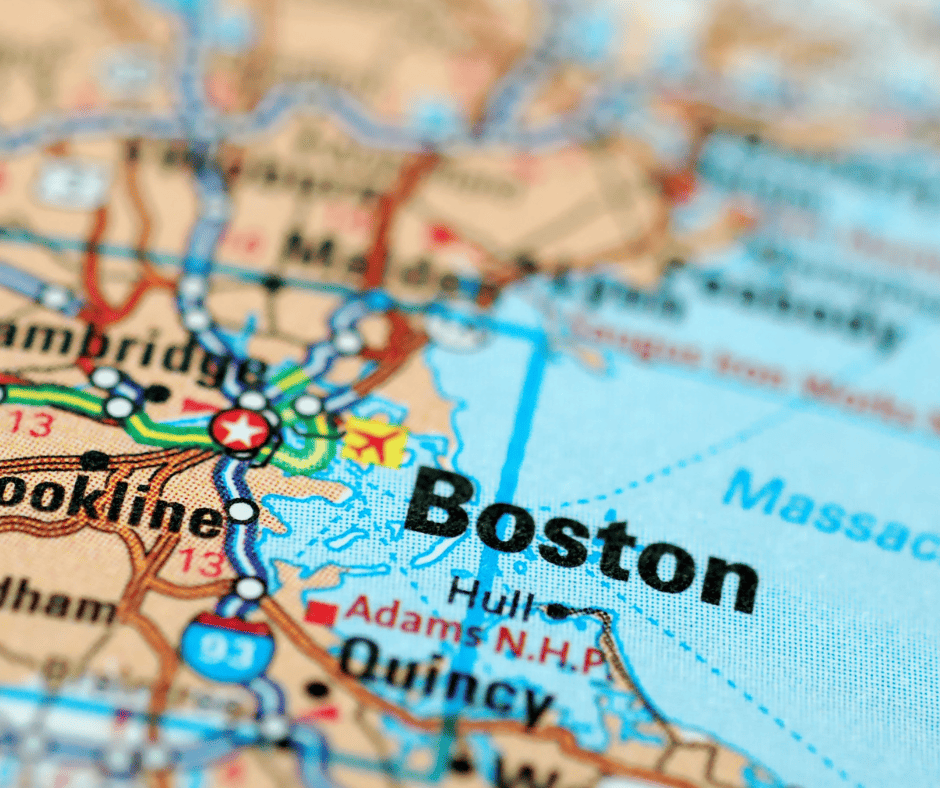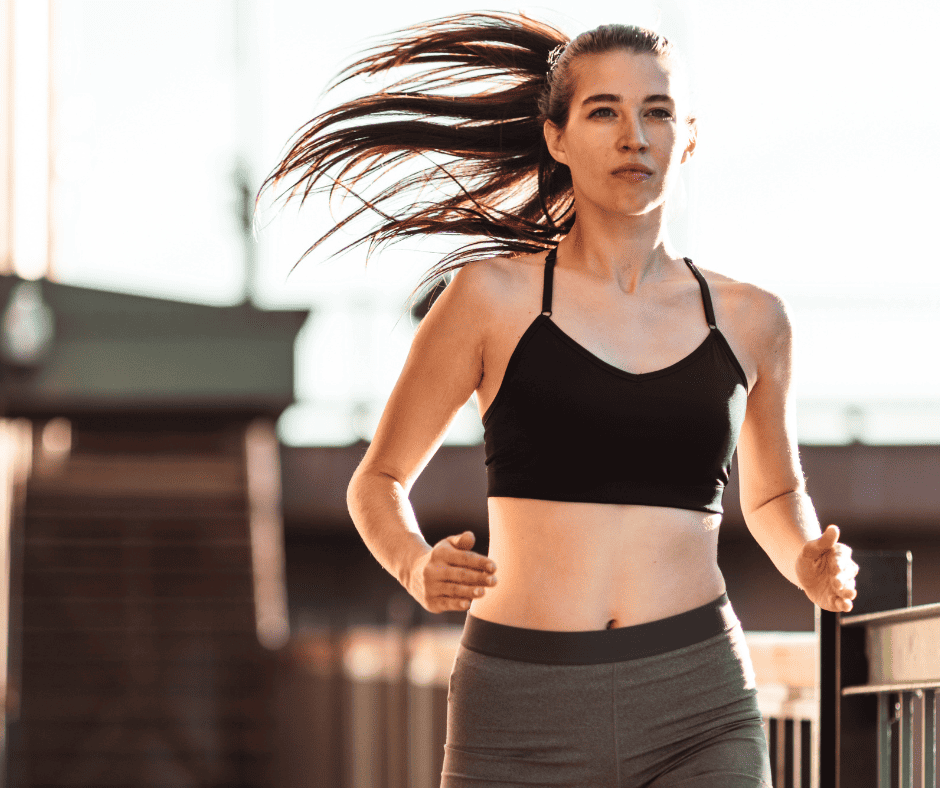Entering the Boston Marathon 2024 is a coveted achievement for many runners, and while qualifying for the race can be challenging, it is certainly possible with dedication and training.
Qualifying times are based on age and gender, and they require runners to meet specific time standards in a certified marathon.
For example, a male runner aged 18-34 must complete a marathon in under 3 hours to qualify, while a female runner in the same age group must finish in under 3 hours and 30 minutes.
The qualifying times become more lenient as age increases.

Before we dive into the details of how to enter the Boston Marathon in 2024, let’s first take a brief glimpse into the rich history of this iconic race.
- The Boston Marathon is the world’s oldest annual marathon, dating back to its inception in 1897.
- The race started because John Graham, the first U.S. Olympic manager, was inspired by what he witnessed at the Olympic games in 1896. A year later he formed the Boston Marathon (then only 24.5 miles long).
- The event was inspired by the success of the first marathon race in the 1896 Summer Olympics. A year later, John Graham, the first U.S. Olympic manager formed the Boston Marathon (then only 24.5 miles long).
- The Boston Athletic Association (B.A.A.) has organized the marathon event every year since 1897 except in 2020 due to the COVID-19 pandemic.
- The marathon was originally only open to male runners, but in 1972, women were allowed to officially enter the race.
- Since then, the Boston Marathon has become one of the world’s most prestigious and iconic marathons.
The Boston Marathon is more than just a race – it celebrates athleticism, perseverance, and community.
For many runners, the Boston Marathon is the pinnacle of their running careers, a chance to compete against the best of the best and achieve their personal bests.
But the race also holds a special place in the hearts of Bostonians, who turn out in droves to cheer on the runners and create a festive atmosphere throughout the city.
Now that we’ve explored the rich history and cultural significance of the Boston Marathon, let’s dive into the practical details of how to enter the race in 2024.
When Is The 2024 Boston Marathon?
On the traditional Patriots’ Day date, the 128th Boston Marathon is set to take place on Monday, April 15, 2024.
If you’re curious about the exact start time for your particular wave, the Boston Athletic Association (B.A.A.) website has a countdown timer down to the second.
Elite runners typically kick off the race, so if you’re among them, you can expect to be among the first to hit the starting line.
Check out the starting times for the previous marathon to get an idea of when to expect your wave to begin:
| Division/Program | Starting Time |
| Women’s Wheelchair | 9:05 a.m. ET |
| Handcycles and Duos | 9:30 a.m. ET |
| Elite Women | 9:47 a.m. ET |
| Elite Men | 9:37 a.m. ET |
| Military March | 6:00 a.m. ET |
| Para Athletics Division | 9:50 a.m. ET |
| Wave One | 10:00 a.m. ET |
| Wave Two | 10:25 a.m. ET |
| Wave Three | 10:50 a.m. ET |
| Wave Four | 11:15 a.m. ET |
| Men’s Wheelchair | 9:02 a.m. ET |
The Boston Marathon holds a special allure for runners worldwide. However, securing a spot in this renowned event is no easy feat.
To participate in the Boston Marathon, runners must achieve a Boston Qualifying (BQ) time, which requires exceptional dedication, training, and determination.
Let’s delve into the challenging journey of qualifying for the Boston Marathon and the rigorous standards that make it an achievement reserved for those who meet the demanding criteria.
How To Qualifying For The Boston Marathon
Qualifying for the Boston Marathon is an achievement that many runners aspire to, and it requires meeting specific time standards for your age and gender.
The Boston Athletic Association (BAA) sets these standards to ensure that the field of runners is competitive and challenging.
To qualify for the Boston Marathon, runners must meet time standards based on their age on the day of the race. These standards must be achieved on a certified course approved by the U.S.A. Track and Field or international equivalents designated by the BAA.
The fastest runners get priority registration, and if the number of qualified applicants exceeds the field size limit, an even faster time is necessary to survive the cut-off.
The qualifying times serve as the first step towards entering the elite race, and the exact times for each age group can be found on the BAA website.
To determine the qualifying times for each age group and the cut-off times from prior years, refer to the list below.
| Age Group | MEN | WOMEN |
| 18-34 | 3hrs 00min 00sec | 3hrs 30min 00sec |
| 35-39 | 3hrs 05min 00sec | 3hrs 35min 00sec |
| 40-44 | 3hrs 10min 00sec | 3hrs 40min 00sec |
| 45-49 | 3hrs 20min 00sec | 3hrs 50min 00sec |
| 50-54 | 3hrs 25min 00sec | 3hrs 55min 00sec |
| 50-54 | 3hrs 25min 00sec | 3hrs 55min 00sec |
| 55-59 | 3hrs 35min 00sec | 4hrs 05min 00sec |
| 60-64 | 3hrs 50min 00sec | 4hrs 20min 00sec |
| 65-69 | 4hrs 05min 00sec | 4hrs 35min 00sec |
| 70-74 | 4hrs 20min 00sec | 4hrs 50min 00sec |
| 75-79 | 4hrs 35min 00sec | 5hrs 05min 00sec |
| 80 and over | 4hrs 50min 00sec | 5hrs 20min 00sec |

Boston Marathon Qualifying Times: Can You Make the Cut?
You might be thinking that if over 30,000 athletes from all around the globe can qualify for the Boston Marathon, then you can do it too.
If you want to compete in the Boston Marathon, you need to meet the qualification requirements within a 12-month period before the September registration date for the April race.
This means you have to achieve a qualifying time between approximately 7 and 19 months before the race in April.
To qualify for the 128th Boston Marathon on April 15, 2024, you will need to have met the qualifying time for your division as early as September 1, 2022, and prior to registering for the April race on September 1, 2023.
You can find the cut-off time limits from prior years below. For the 2022 and 2023 Boston Marathon, there was no cut-off time limit. This means that all runners who applied with a valid qualifying time were accepted into the race.
| YEAR | FIELD SIZE | “CUT-OFF TIME” | QUALIFIERS NOT ACCEPTED |
| 2012 | 27,000 | 1:14 | 3,228 |
| 2014 | 36,000 | 1:38 | 2,976 |
| 2015 | 30,000 | 1:02 | 1,947 |
| 2016 | 30,000 | 2:28 | 4,562 |
| 2017 | 30,000 | 2:09 | 2,957 |
| 2018 | 30,000 | 3:23 | 5,062 |
| 2019 | 30,000 | 4:52 | 7,248 |
| 2020 | 31,500 | 1:39 | 3,161 |
| 2021 | 20,000 | 7:47 | 9,215 |
I’ve run a Boston Marathon qualifying time — what are my chances of getting in?
Unfortunately, meeting the qualifying time for the Boston Marathon does not guarantee you a spot in the race due to the limited number of race bibs available.
The fastest runners in each age and gender group are accepted if the total number of submissions surpasses the allotted field size for qualified athletes.
Registration happens over two weeks with the fastest runners registering during the first week, followed by those who beat their qualifying time by 20, 10, and 5 minutes.
Running The Boston Marathon With a Charity Or Tour Group
If you don’t qualify for the Boston Marathon, don’t worry, there is another option available.
You can choose to run on behalf of a participating nonprofit organization in the BAA’s Official Charity Program. However, there is a minimum fundraising requirement of $5,000 per athlete, which can be set higher by individual charities.
Keep an eye on the official website for the new date as the registration submissions for the 2023 marathon for the official charities began on September 12.
In addition, some nonprofit organizations have received donated race entries from Boston Marathon sponsor John Hancock in the past. It is unclear whether the change in sponsorship to Bank of America in 2024 will affect the Non-Profit Program.
Alternatively, some tour operators offer a limited number of invitational marathon entries through the BAA’s International Tour Program.
Regardless of how you secure your spot, running the world-famous Boston Marathon course is an unforgettable experience.
Can You Defer Your Boston Marathon Entry?
The Boston Athletic Association (B.A.A.) does not allow deferrals for most applicants due to the high volume of applications and the fact that most applicants qualify based on officially recognized marathon times.
However, an exception is made for individuals who become pregnant before race day and choose not to participate due to their circumstances, including post-partum up to 24 weeks following the birth of a child.
If you fall under this category and would like to request a pregnancy or postpartum deferral, please refer to the B.A.A. Pregnancy and Postpartum Deferral Policy for more information.
How To Register For The Boston Marathon
Registering for the Boston Marathon requires meeting specific time standards based on age and gender. In 2022, registration occurred from September 12 to September 16, 2022, spanning five days.
The entire registration process takes place conveniently online through the B.A.A.’s dedicated platform, Athletes’ Village.
How Much Does It Cost To Register For The Boston Marathon
Over the past few years, non-US residents have had a slightly higher registration rate than US residents.
As of the 2023 Marathon, the registration fee for qualified runners is $225 USD for residents of the United States and $235 USD for residents of other countries.

A Brief Look At The Boston Marathon Course
The Boston Marathon is renowned for both its historical significance and its challenging course. Spanning eight cities and towns, the point-to-point route is filled with unique features.
One of the most well-known aspects of the course is Heartbreak Hill, located in the town of Newton. Positioned between the 16- and 21-mile marks, this series of four hills presents a formidable challenge for runners, often considered among the toughest in popular marathons.
Interestingly, Boston Marathon veterans express equal concern about the significant downhills along the course.
With a net elevation drop of approximately 460 feet (140 meters), the first half and the last five miles consist mainly of downhill sections.
It is crucial for participants to exercise caution and avoid starting too fast on the downhill portions to prevent exhaustion later in the race, a phenomenon known as ‘bonking.’
Effective training for the Boston Marathon should include practice running uphill and downhill to prepare for the varied terrain.
The rolling nature of the course adds an additional layer of complexity to pacing.
While the first half may feel relatively easier, maintaining a steady pace and reaching the halfway point on target can help prevent excessive strain on the quadriceps and ensure enough energy is preserved for the challenging Newton Hills.
For a comprehensive breakdown of the Boston Marathon course, you can refer to this detailed article which we will make available here very soon.



Comments are closed.